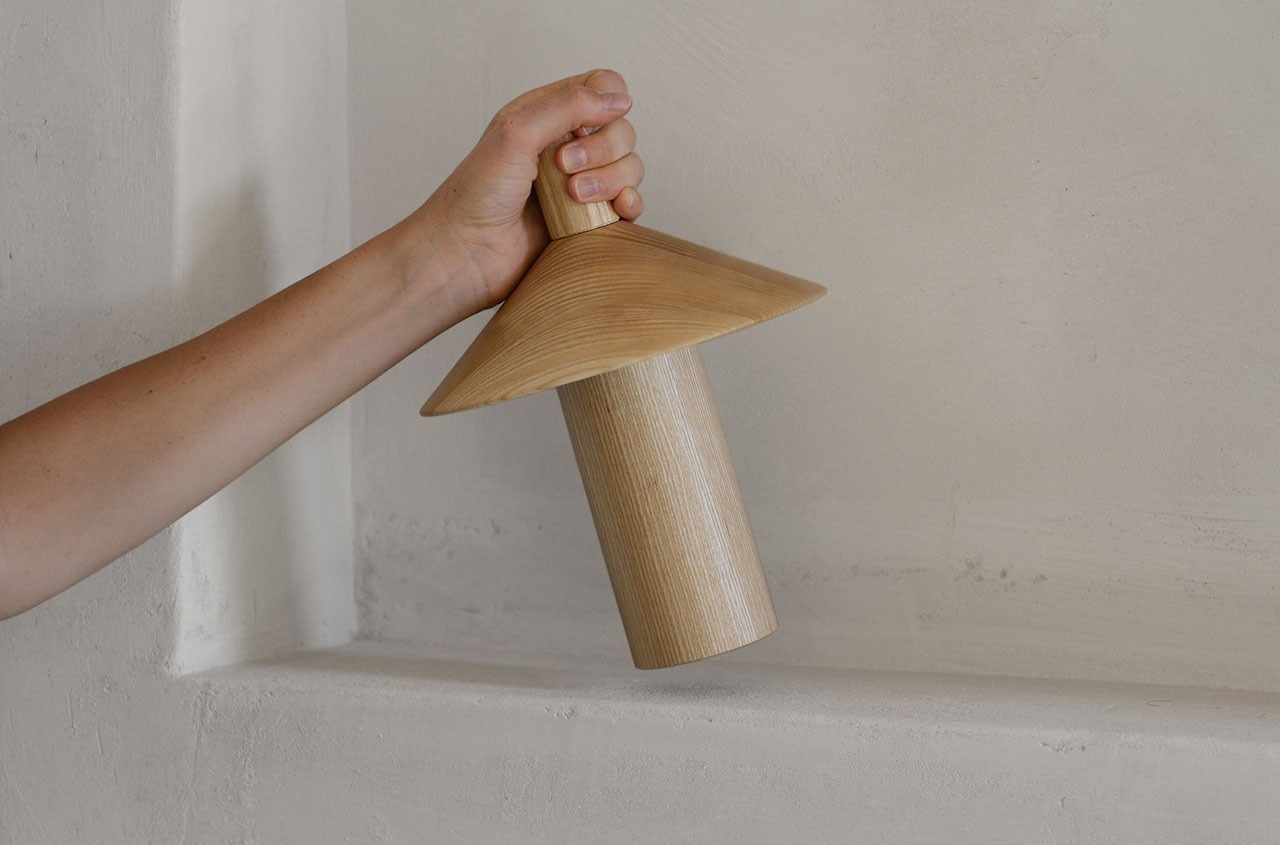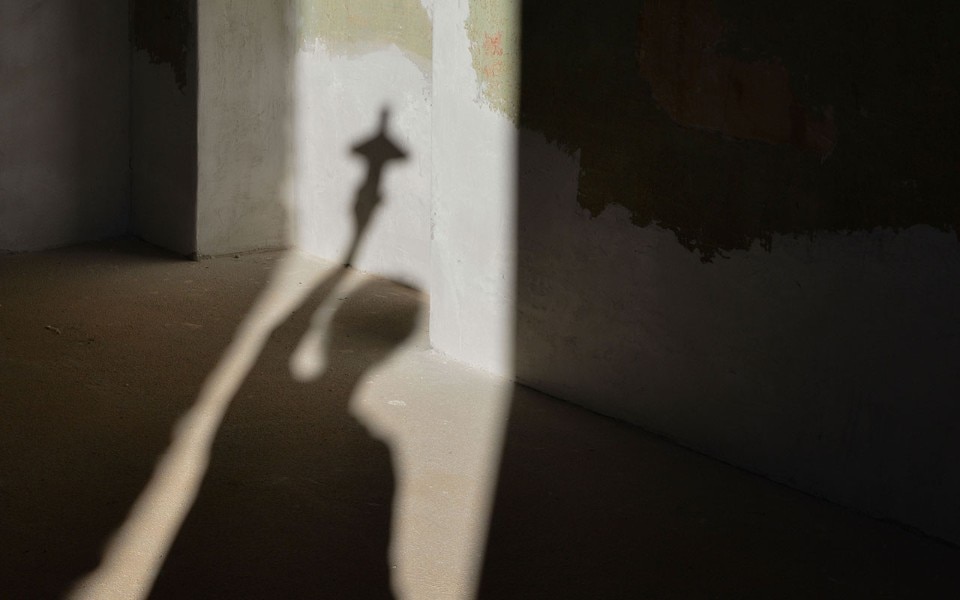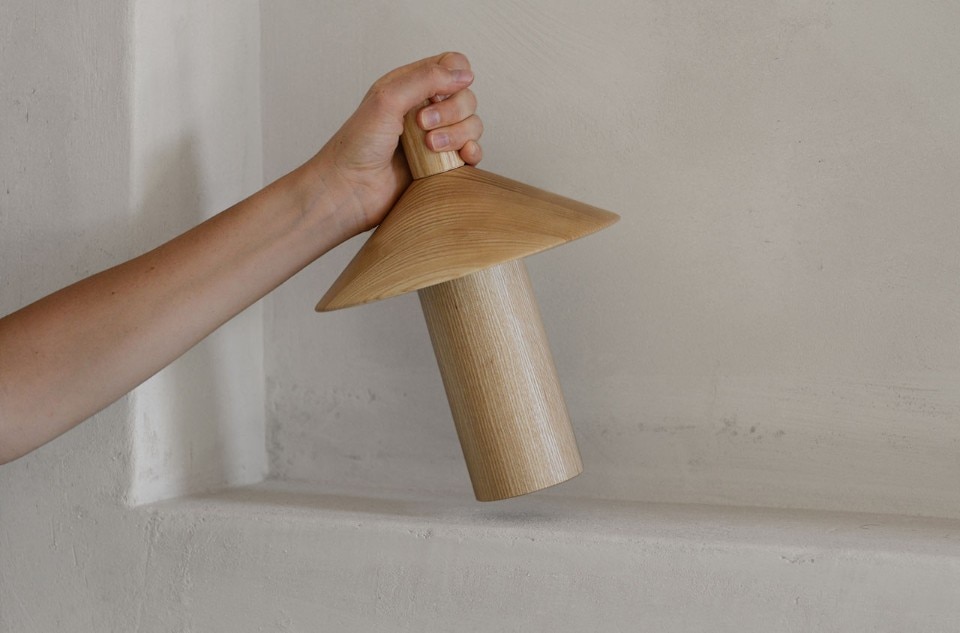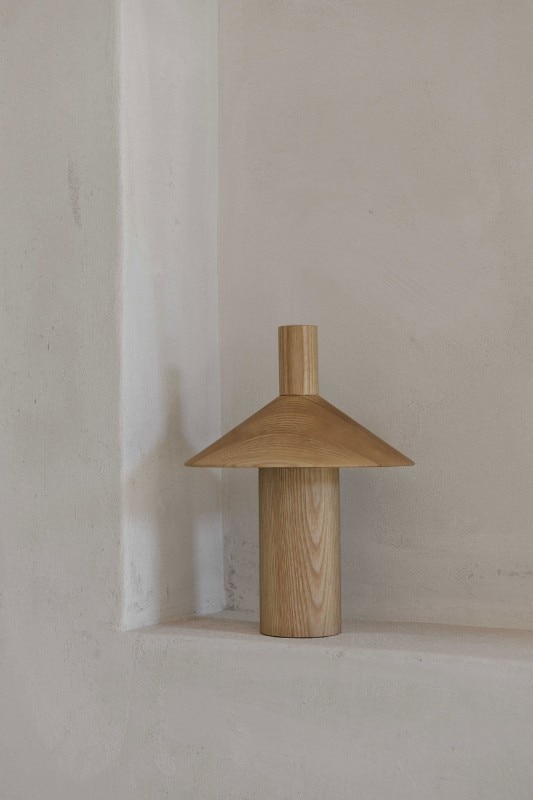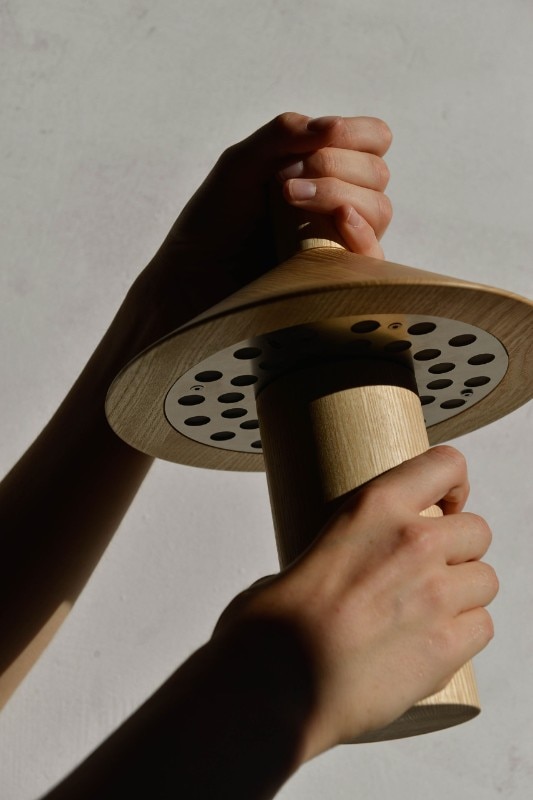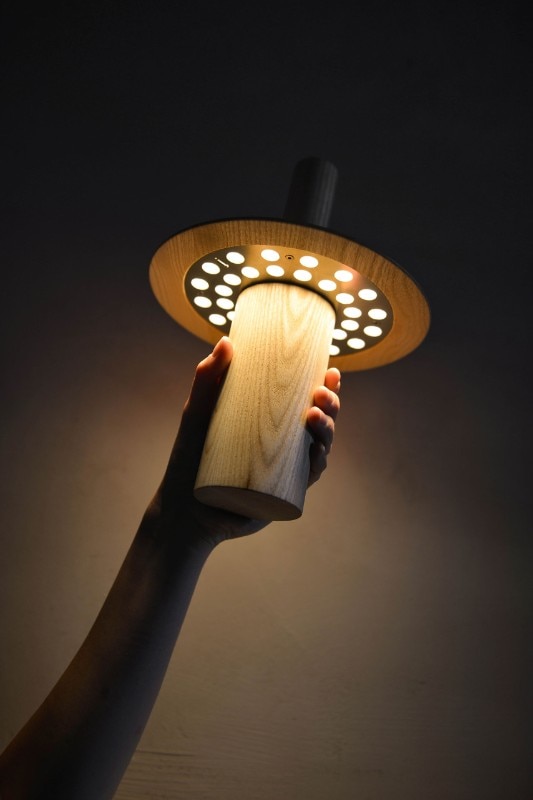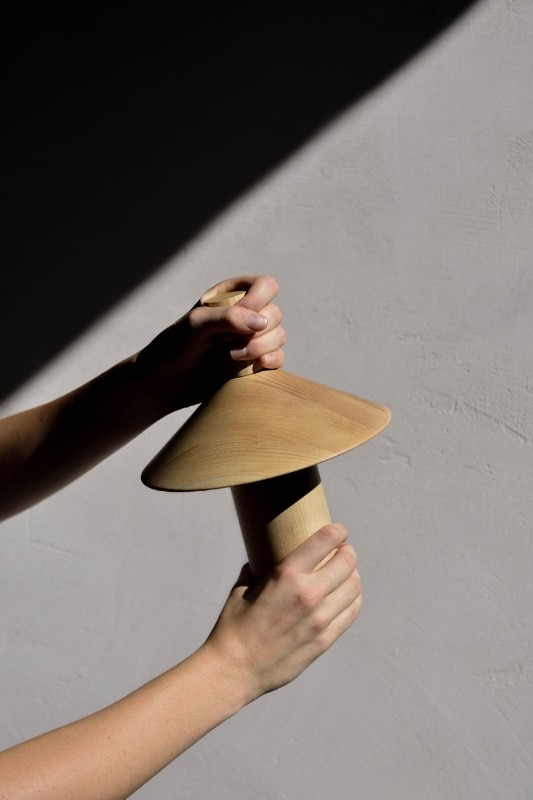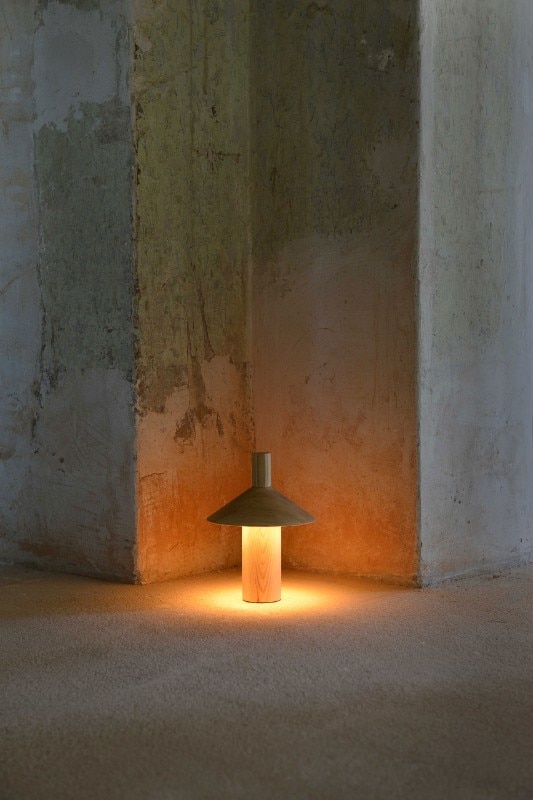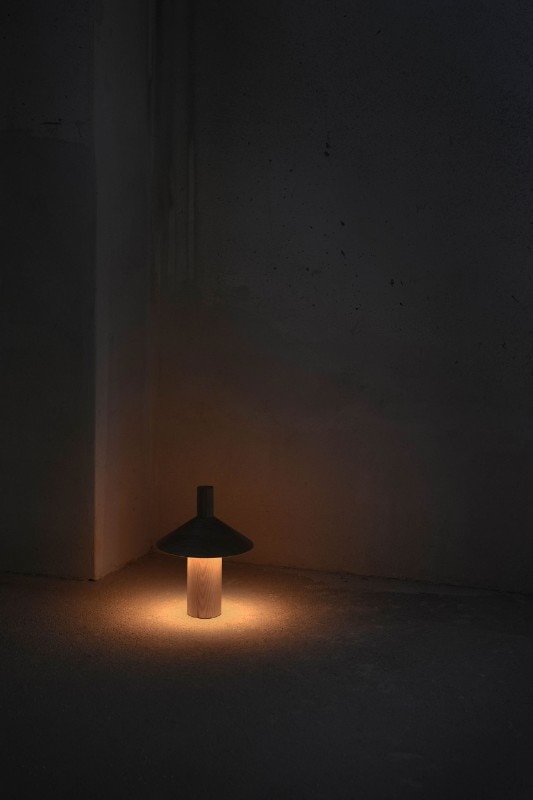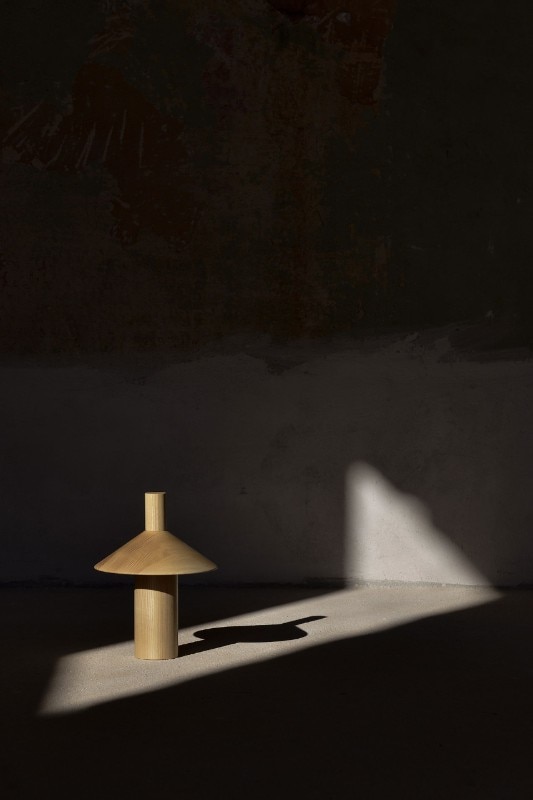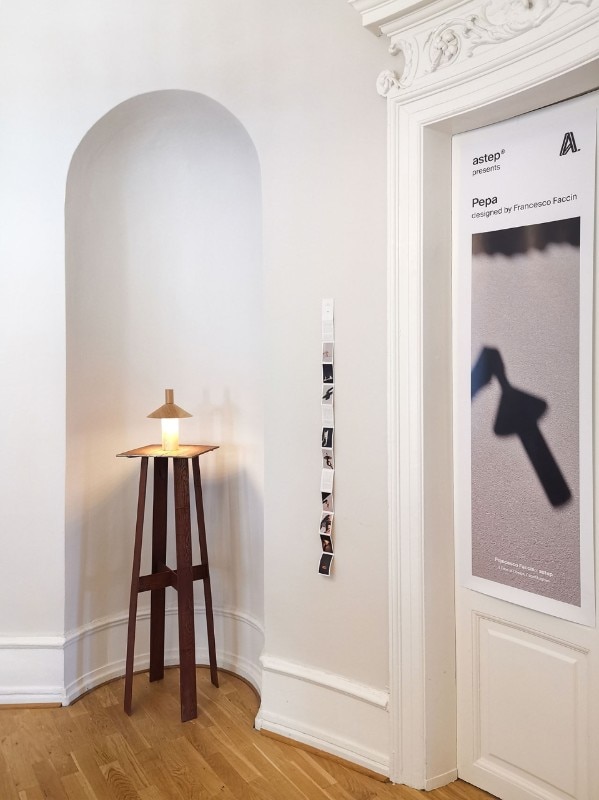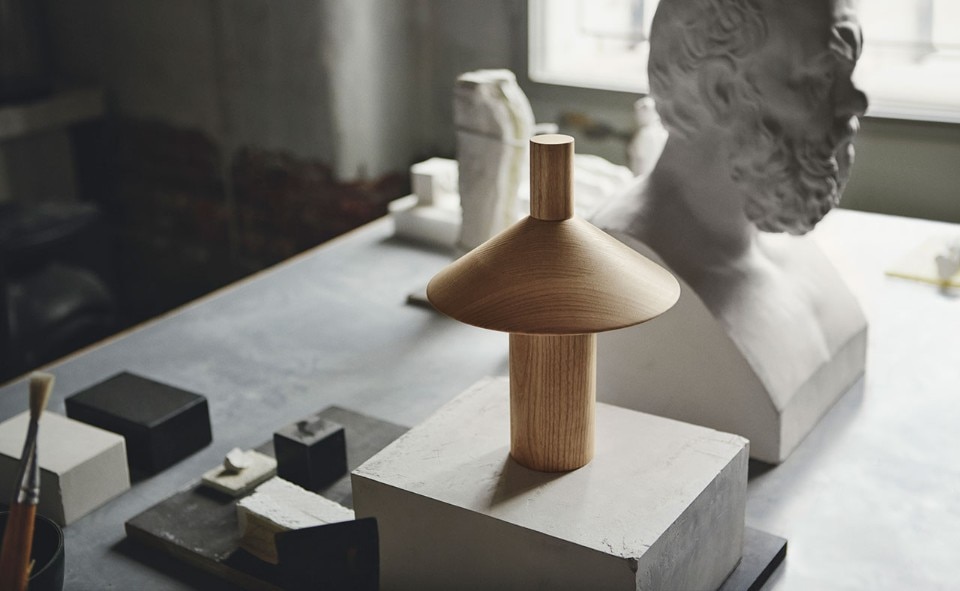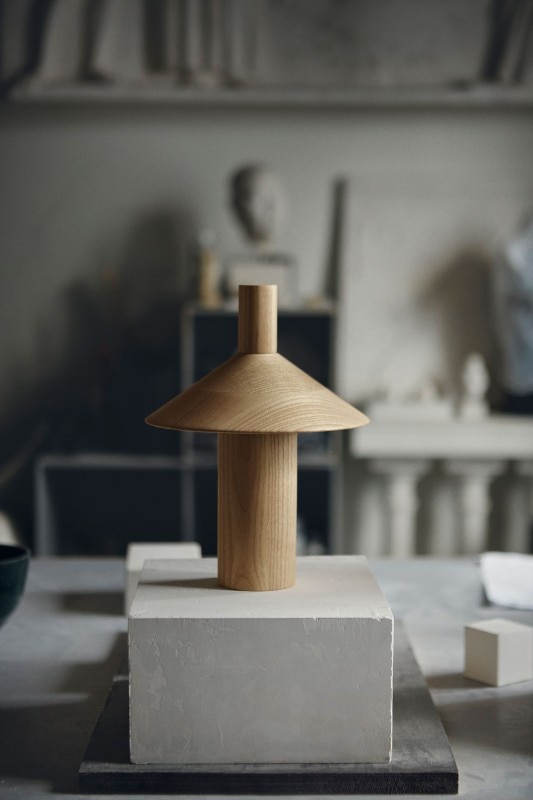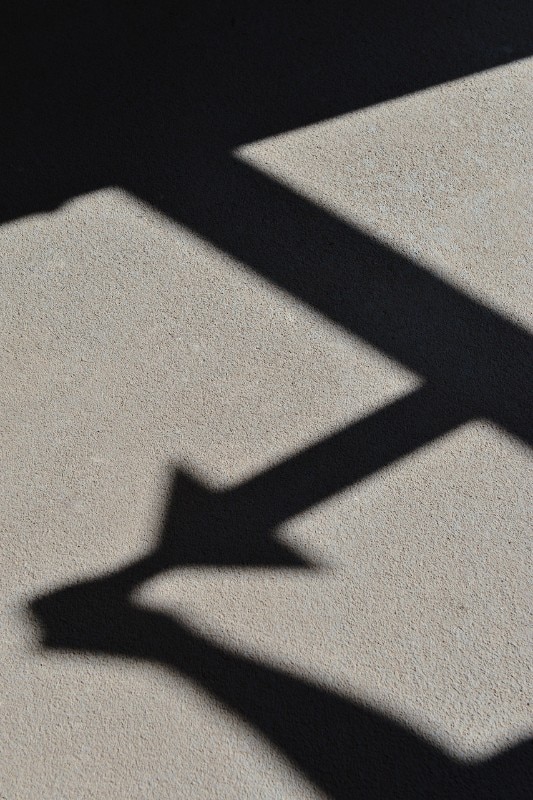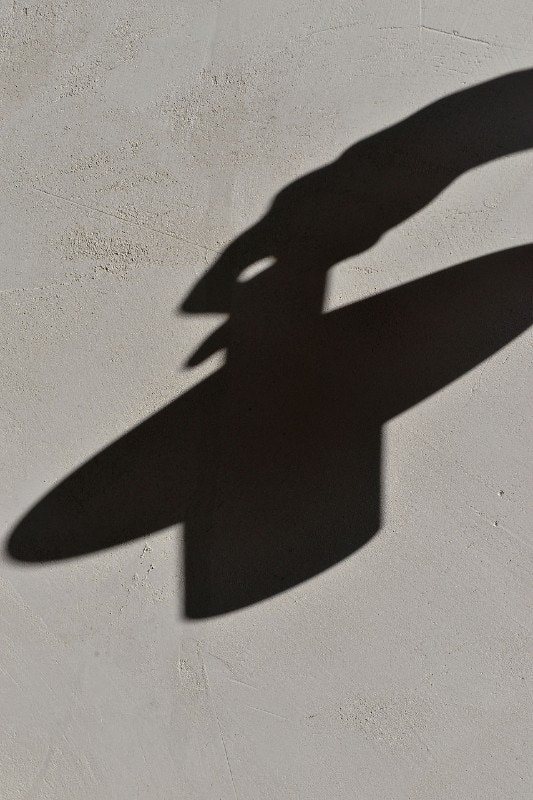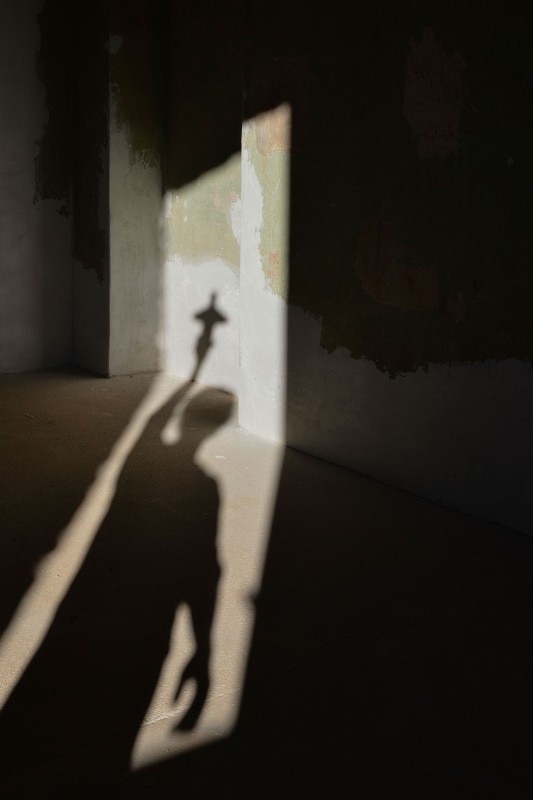A magnetic sensor regulates the light with a seamless and infinite rotating motion: no one ever thought of it, up to now. In fact Pepa, a portable wooden lamp designed by Francesco Faccin for Astep, is the result of a patent registered this past September. Inside, no wires; outside, only four screws, hidden under the lampshade. By reversing the trend of lamps that are never touched, or at the most lightly or, more often, voice “commanded”, Pepa reintroduces physicality with users: it must be held in both hands and turned, just like a pepper grinder. This also explains the peculiar choice of wood. “There’s a certain pleasure in handling a piece of wood,” explains Faccin. “Plus we know it ages well.” Moreover, when its lifespan is done, a banal gesture suffices, like removing the screws, to separate the electrical device from the wood. “Pepa is a manifesto of Astep’s vision: innovative design, accessible technology and sustainability,” adds Alessandro Sarfatti, founder of the Copenhagen-based company that reissues and sells around the world the lamps by his grandfather Gino Sarfatti and by Vittoriano Viganò, with major markets in South Korea, Australia, Israel and the United States.
Pepa, design Francesco Faccin for Astep, 2020
How were Pepa and your collaboration born?
Alessandro Sarfatti: Pepa is the realization of an idea I have of Astep that tries to put together three elements: design, innovation, which brings the best to the biggest number of people, and inheritance. My grandfather, Gino Sarfatti, founded Arteluce, my father Luceplan. Astep is a design company, practically the third generation. At Astep, I really like the idea of evolution, enhancing the past (a tribute to my family), but also taking a step forward. Our idea is to use accessible technology. Thanks to my partner, Nicolas Zambetti, who had worked at Apple and before that at IDEO. When I met him, he was teaching at the Copenhagen Interaction Design Institute.
Francesco Faccin: In the design of this lamp, we patented the magnetic sensor, which regulates the wireless light. It was a process of collaboration: as a designer, I brought an idea. Technically, I wouldn't know where to find the solution. There was a figure like Nicolas, capable of finding a technological solution. In this case, a magnetic sensor. It could have infinite applications in other lamps to develop in the future.
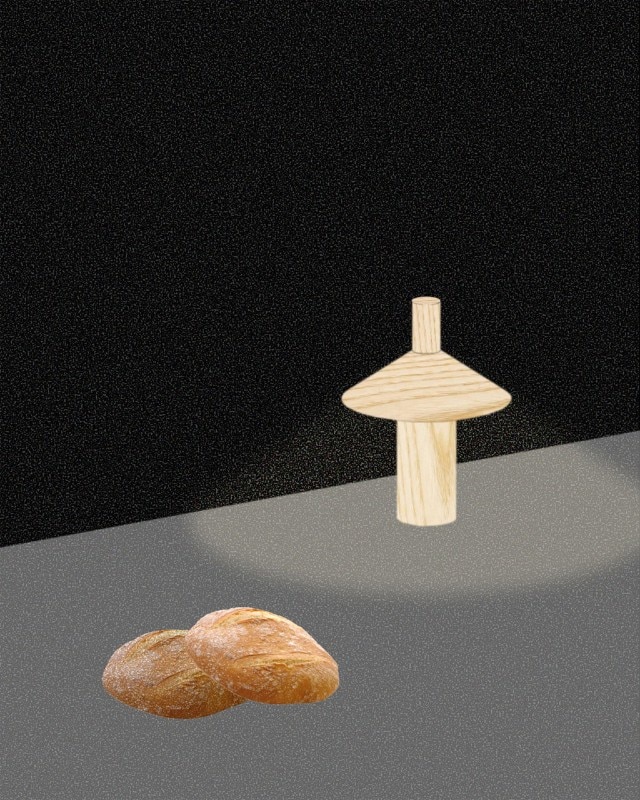
How did the project start?
AS: I met Francesco in 2018 at the Compasso d'oro award ceremony; a few days later, we met in the studio and started designing.
Who are Astep's clients?
AS: They are clearly international. Astep sells all over the world. We are solid in South Korea, Australia, Israel, United States. My impression is that they are about 30-50 years old. I am not ashamed to admit that the old pay the new. The work and energy of my grandfather's work, Gino Sarfatti, still use them today; they are timeless products, they are still easy to develop and sell. And in an era like ours with a swift technological leap, we need to have objects that remind us that time actually flows a little slower. A lamp designed in the fifties that you like and feels good in your home gives a sense of peace
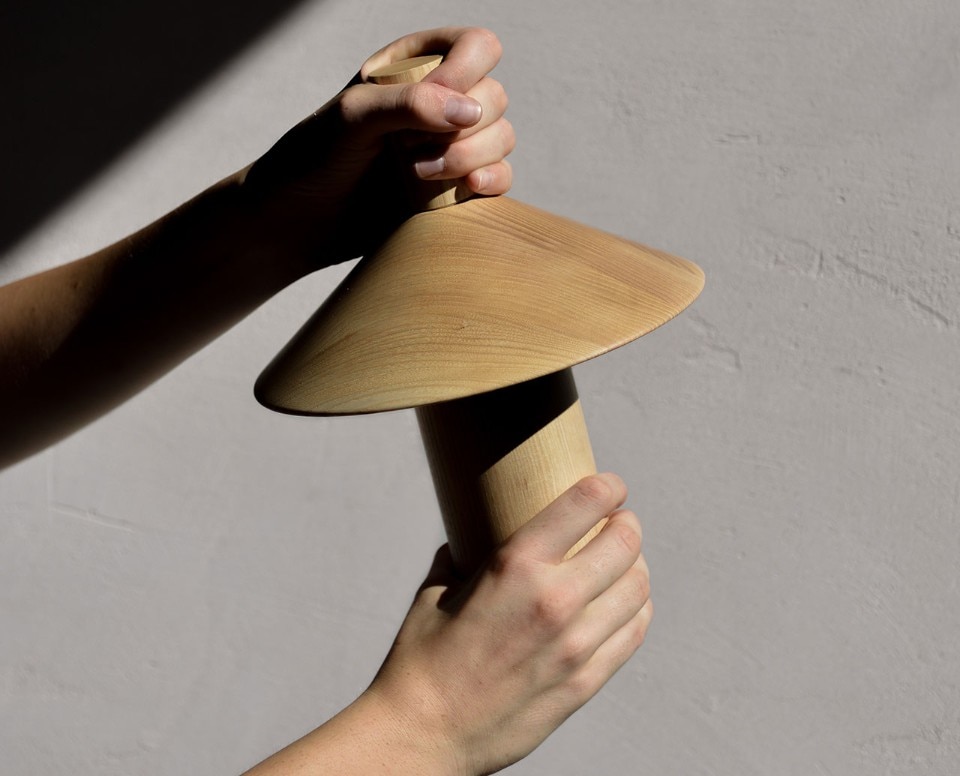
What is the objective of Astep?
AS: I want to make products that make sense today and push design innovation forward. I was able to do it with Gomez Paz's candle and Alfredo Häberli using induction in a center mode. Pepa is our third new project. It is also a work on portability, on wireless: our lamps are all wireless, they work with batteries and LED efficiency. We gave Francesco the size of the batteries and the circuit, and he sent Pepa's first design a few months later. We immediately liked the idea of user interaction with the product.
Right, because to work, Pepa needs to be touched, with two hands even...
FF: It's true. The trend is to have lamps that do not touch each other. The physicality of the lamp as an object has become lighter and lighter. Instead, this lamp requires physical contact: it must be touched and held like a pepper mill.
Why a wooden lamp?
FF: I immediately told myself that either I found a meaning in wood combined with light or did not. The meaning is that I have to touch it to move it, to carry it around the house. But wood, unlike aluminum or glass, is also a material that I feel like touching. Natural wood will age well in use. It will take a patina, where it is grasped, halos will appear. It is an object that ages with us and that, after 20 years, will be different from what it is now. This is also a theme that Alessandro has grasped, and that was not taken for granted. Very often, today, products are designed to be attractive when you buy them, but then they age very badly because they are made with materials that are already worn out after 10-15 years. How a product age is a fundamental element when we talk about sustainability.
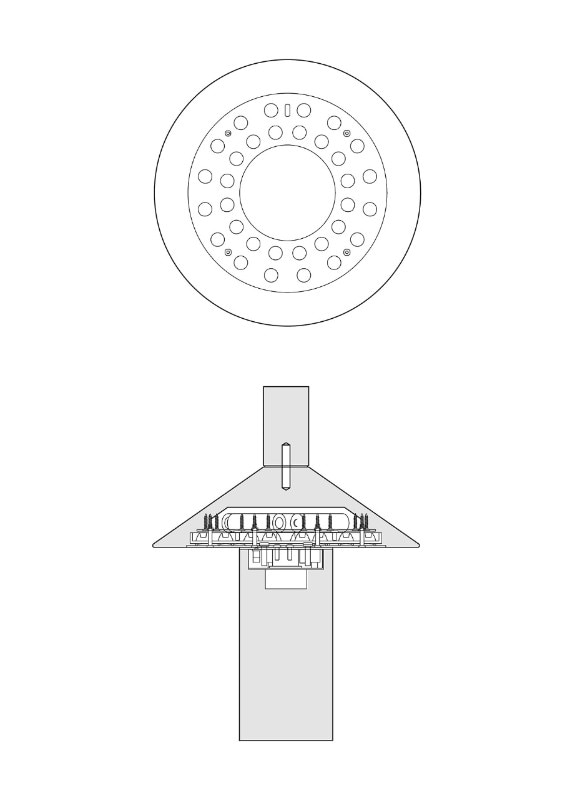
Let's talk about sustainability.
AS: We have made many arguments about how the lamp is assembled and how it will be disassembled at the end of its life. When I have to throw it away, it will be enough to remove four screws and separate the electronic part from the body, all in wood. Design sustainability is not only linked to the end of life but also and above all to reparability. If the electronic circuit breaks, you can easily ask Astep for another one and replace it. For me, a company's sustainability is also paying more attention to the dynamics of the material, from packaging to product reparability. It will also only be sold with a charging cable, without a transformer, because everyone already has a transformer to charge a computer or telephone or something else. Pepa then uses rechargeable batteries, which you can find in any supermarket, and it can be recharged with a USBC socket.
FF: Another element that I was very interested in is making a synthesis of a product's constituent elements. A lamp reduced to its basic elements is a light source, a switch, and the electronic part that allows you to adjust the light. In Pepa, everything coincides with the lamp itself. With a single gesture, you turn it on, turn it off, and adjust the light's intensity. This has made it possible to have a monobloc lamp made entirely of wood, without metal parts.
In Pepa, everything coincides with the lamp itself. With a single gesture, you turn it on, turn it off, and adjust the light's intensity. This has made it possible to have a monobloc lamp made entirely of wood, without metal parts.
It hardly even looks like a lamp...
FF: Making the four screws invisible was an enormous effort. We were able to concentrate them all inside the lampshade. This complexity of the design part has returned a straightforward, soft product, even though it is full of technological content. As has been the case over the last 30-40 years, not flaunting technology was a crazy gallop. This should be read as a key to possible reconciliation with nature.
How does infinite movement work?
AS: We have filed an invention patent for a technology that allows this movement without limits. There are no wires, just printed circuit boards, and a magnet instead of wire.
FF: Infinite because you can turn it on and off in both directions. The movement is fluid, without the friction of mechanical parts.
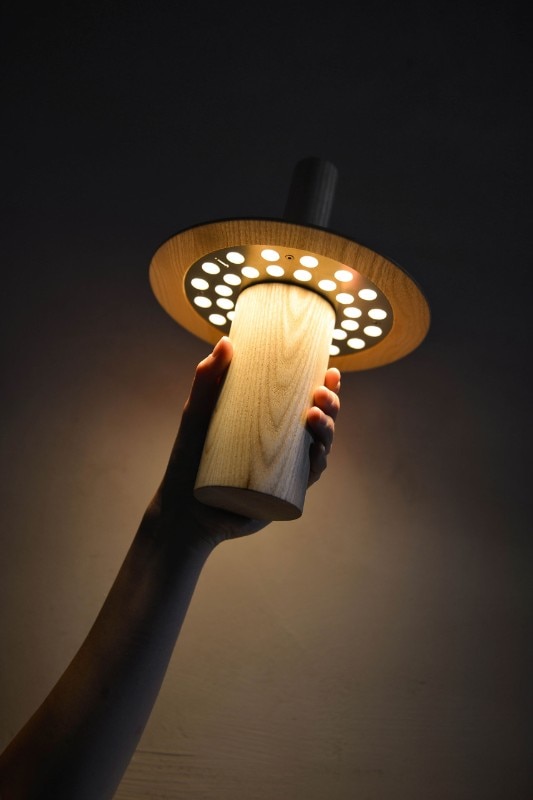
Who will like this lamp? Who will buy it?
AS: After two years of work and development, you're confronted with the problem of price, if I say it's going to cost 450 euros, I hear myself say it's too much. Price aside, anyone who sees it makes very positive comments.
FF: I think it's difficult to define a priori who will like it or if it will work and for how many years. Will it last? It is difficult to say. The important thing is to have a precise objective and work on the substance. We are already thinking about other versions to create a family of lamps: wood is for domestic use, there will be an outdoor version in other materials.
Since Pepa is also the result of a happy meeting, I would like to ask you the main quality of the designer (from the entrepreneur's point of view) and, vice versa, the main quality of the entrepreneur (seen by the designer)?
FF: Alessandro's main quality has been patience and the desire to get to the bottom of the product, find a solution to all the problems that arose, cost what it costs, not only in economic terms but also in terms of effort. It is a situation that has happened to me very few times. Frequently, you stop at the first difficulty. This means believing in the project and also being a bit crazy. To live it as an adventure. With Alessandro, then, a friendship was born that goes far beyond this lamp. And this is the other issue that makes everything very human. Many entrepreneurs ask you to send the project by e-mail without even meeting you. In this case, I don't even start a project. Spending time finding solutions is one of the most beautiful things in this business.
AS: I liked Francesco's authenticity and the desire to find meaning in the design of a wooden lamp, showing great depth. I was lucky because I worked with designers like Alberto Meda and Paolo Rizzatto, who have always had this approach to the project.
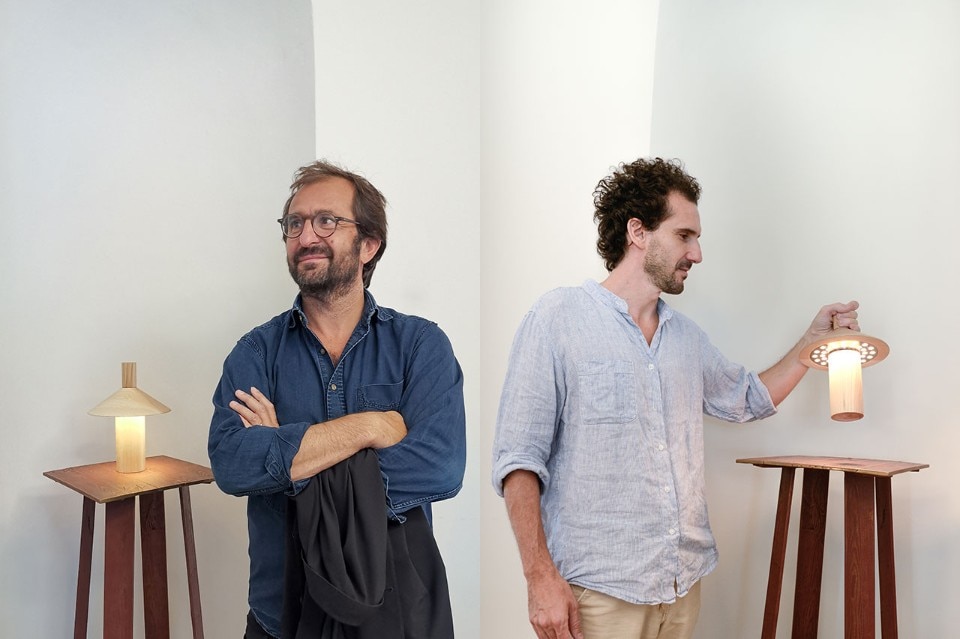
- Product name:
- Pepa
- Designer:
- Francesco Faccin
- Company:
- Astep
- Year of production:
- 2020


